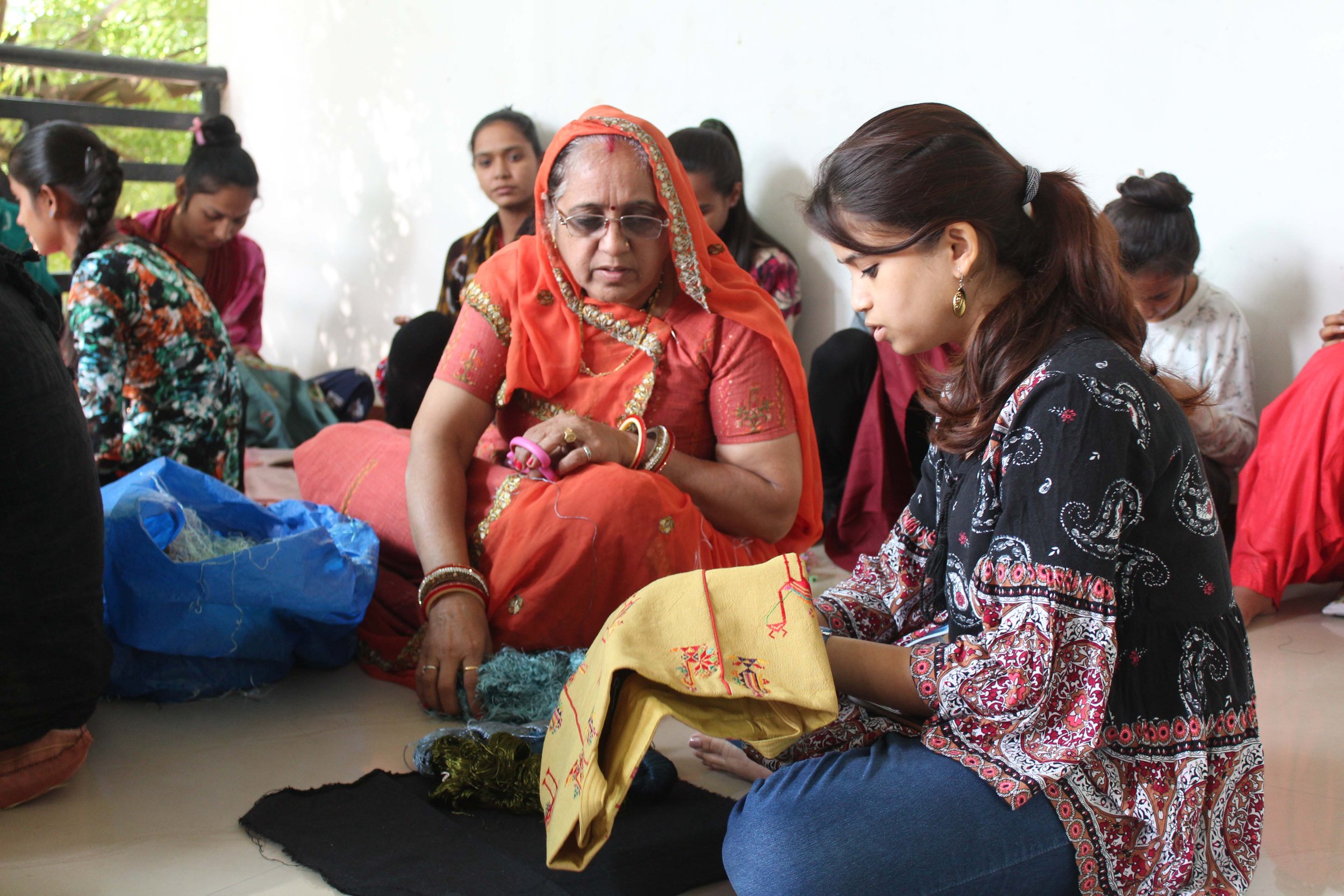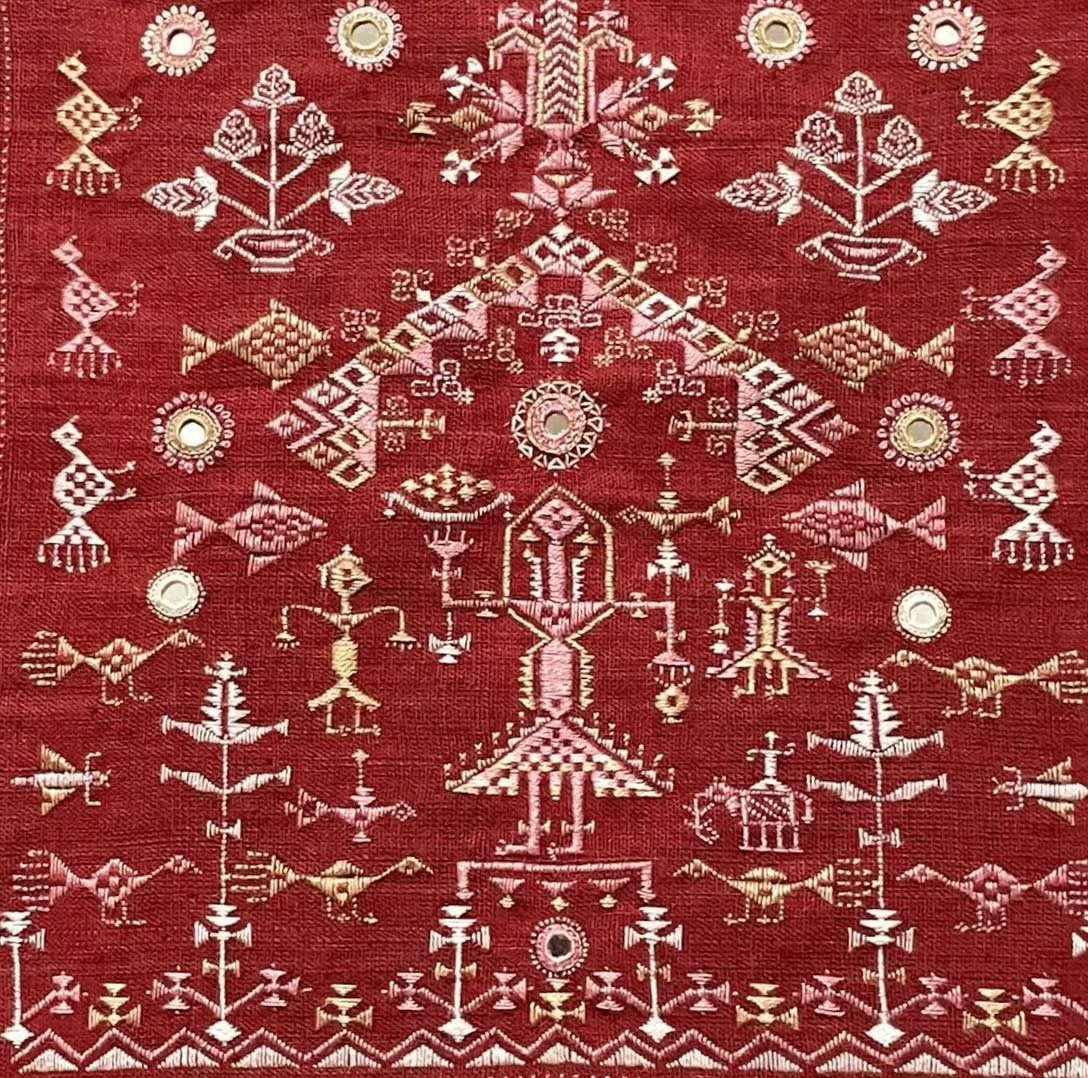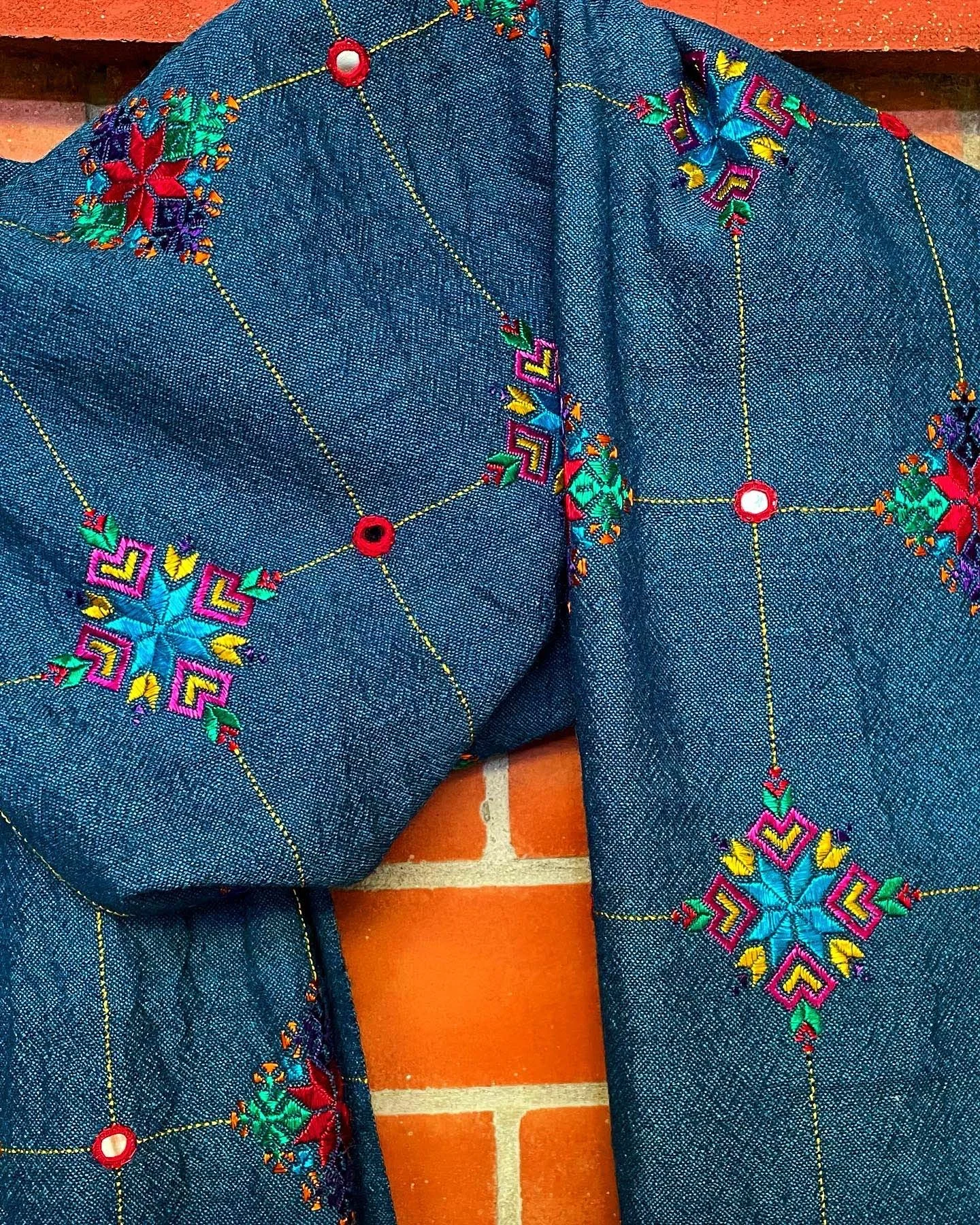Dayaben Dohat
Soof Embroidery Leaves No Room For Error
Dayaben Dohat is a soof embroiderer from the town of Tharad in Gujarat, India. Passed down from mother to daughter, soof embroidery has existed for at least 500 years, typically adorning products that were used for dowries and as a way for the betrothed to demonstrate their talents and imagination. Soof embroidery is a counted thread technique that is done completely on the back of the cloth, the artist has no print or drawing to guide them and must count each and every thread during the process. Most soof patterns are geometric in nature, beginning with a triangle. From this center point, a series of triangles are embroidered to create motifs ranging from peacocks to mangoes. However, several different stitches exist, all creating different patterns: Resho, Lad, Soof, Phalo, Chhalangi, Ler, Sagar, Bato, Jali, Ganatri, Goldo, Bakhkhio, and Sankli.
Born in Parkar City, Pakistan, along the border of India, Dohat’s family migrated to India due to the Indo-Pakistan war in 1971. It was at the age of ten when she first learned how to embroider from her mother Raniben Bhanani. Today, Dayaben continues to embroider alongside her husband Bhurabhai Dohat. She is credited as one of the co-founders of Kala Raksha and has received many prestigious awards for her work, including the World Craft Council Excellence Award by UNESCO in 2018.







